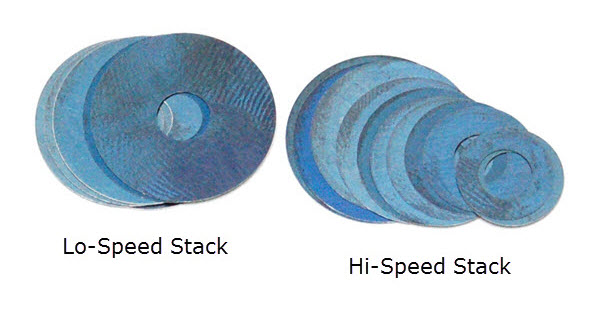FORK COMPRESSION
GOLD VALVE INSTALLATION
FMGV S252502C
Street 25mm
Welcome to the wonderful world of Gold Valving. To obtain your personal Custom Suspension Settings.
DVS Setup Sheet - If you haven't already, go to DVS Valving Search, insert your Access Code, and rider data and print your DVS Setup Sheet.
The standard compression valving stack is pre-assembled. You will need to disassemble the valve and compare the setting to your DVS Custom Setup Sheet setting and make the necessary changes.
CAUTION: IF YOU ARE UNFAMILIAR WITH REBUILDING AND REVALVING FORKS, STOP!!! DO NOT PROCEED; SEEK OUT A QUALIFIED SUSPENSION TECHNICIAN.
NOTE: All measurements are metric (for inches divide by 25.4). The valving list starts at the piston face and goes towards the Base Plate. Valve specs are listed by (QUANTITY) THICKNESS x DIAMETER. A number in parentheses means quantity. If there is no number in parenthesis the quantity is one. Example: (2).15x30 means quantity two, 15 hundredths of a millimeter thick by 30 millimeters in diameter. |

|
Tools Required
- In-lb torque wrench that accurately measures 0 to 50 in-lbs (0.58 kgf-m) (SnapOn Digital Torque Wrench shown)
- Hi-Strength Loctite (included)
- Metric calipers and micrometer
|
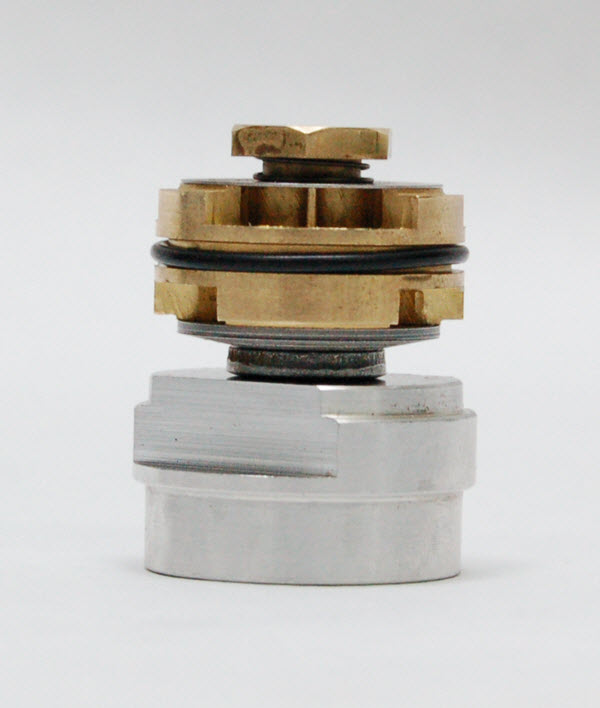
|
VC1- The Compression Base Valve comes pre-assembled. Disassemble it to change valving. Hold the Compression Base in the "V" of TMVJ 065 Vise Jaws.
|
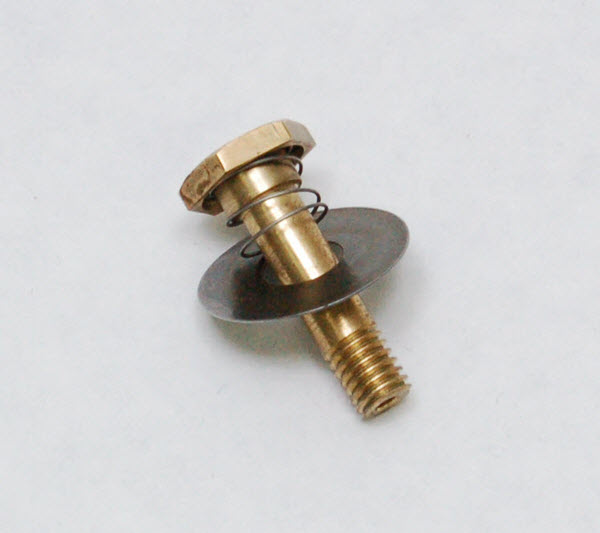
|
VC2- This style Compression Base Valve uses a Valving Bolt inserted from the top of the assembly.
Begin by putting the Check Spring the Check Plate on the Valving Bolt.
|
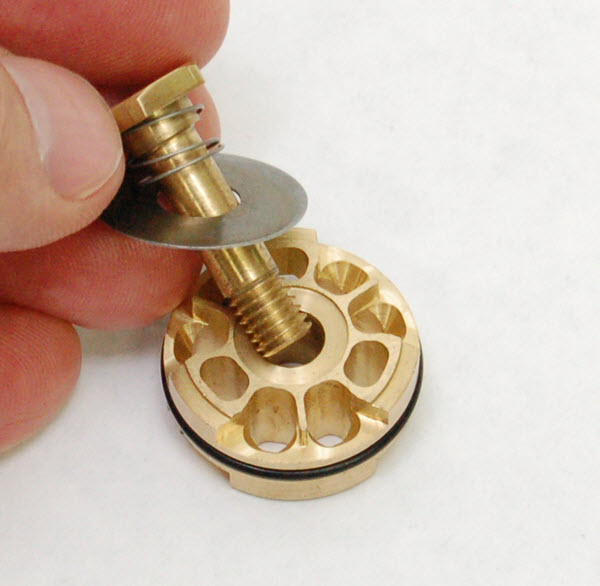
|
VC3- The two sides of the Gold Valve are different. It is important to orient it properly. Place the Gold Valve on the shaft with the Recess going on to the bolt first.
The Recess is the circular pocket on the top face of the Gold Valve Piston.
|
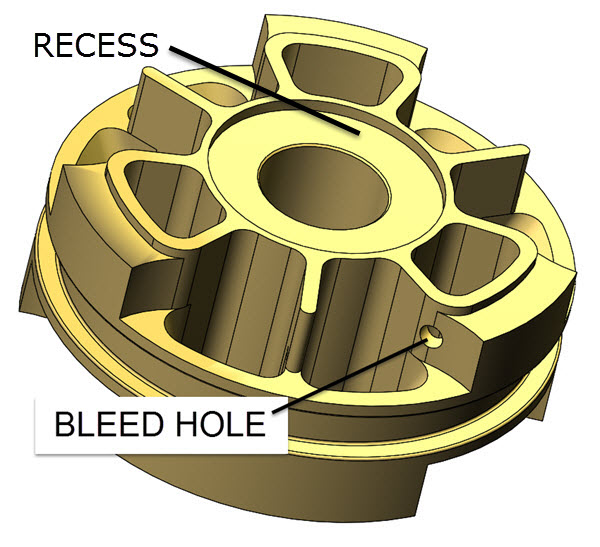
|
VC4- COMPRESSION BLEED HOLE
If the DVS does not call for a Compression Bleed Hole skip this step.
If your DVS Setup Sheet calls for a Compression Bleed Hole check to see if it is already pre-drilled in the piston. If it is not you will need to drill one.
Notice that the bleed hole is on the side of the piston with the recess and is drilled sideways. It connects the two sides of the piston and bypasses the valving stack. The exact location is not critical.
|
|
VALVING STACK TYPES - SINGLE OR TWO STAGE
VC5- You will either be building a Single Stage or a Two Stage Stack. The difference is the Crossover. The Crossover is a smaller diameter shim between the Lo-Speed and the Hi-Speed Stacks.
Note: The DVS Custom Setup Sheet displays individual shims and does not label Hi-Speed, Crossover, and Lo-Speed. This is for your information only. Also you will not use all the shims provided in the Gold Valve Kit.
|
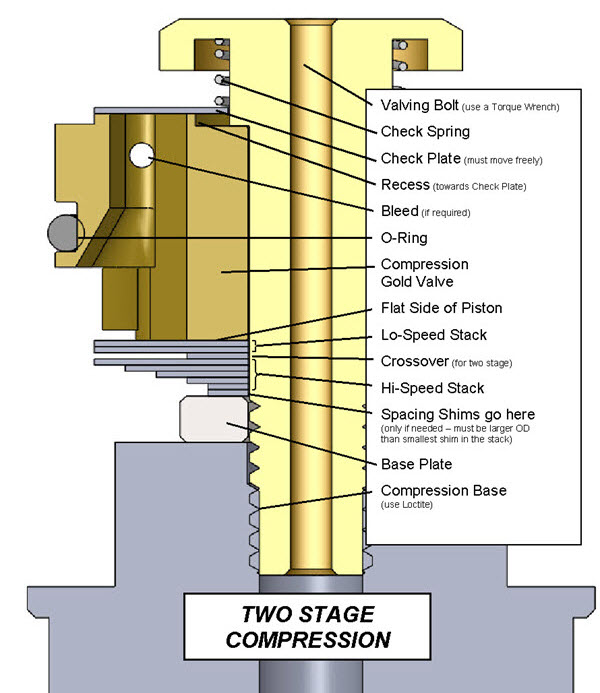
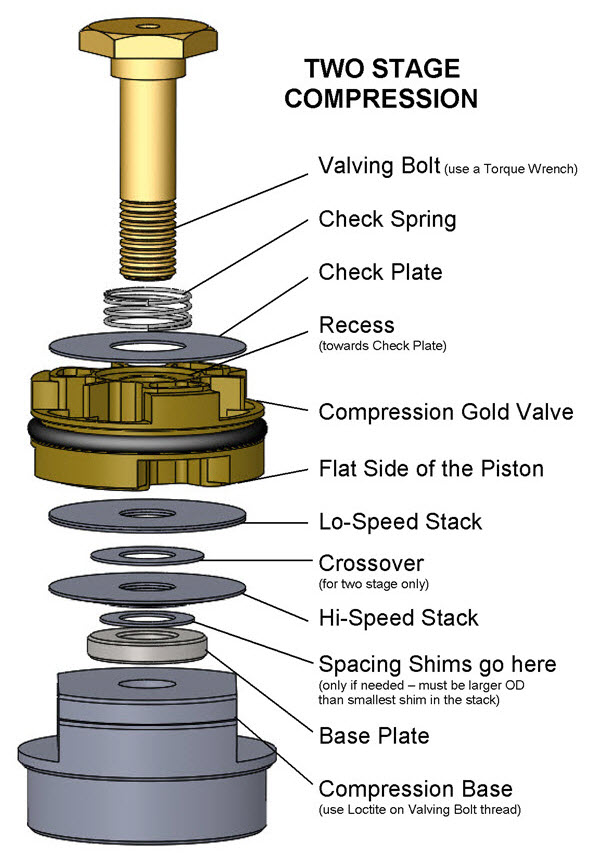
|
VC6- Two Stage Example
(Single Stage is exactly the same except there is no Crossover)
Put the valving on the shaft in the order listed, starting with the Lo-Speed Stack.
For Two Stage the total valving stack is made up of a:
Lo-Speed Stack
Crossover and a
Hi-Speed Stack
(this is only an example - not your setting)
The Total Valving Stack starting from the Gold Valve piston face:
(4) .15x24 - Lo-Speed Stack
(1) .10x16 - Crossover (notice the smaller diameter)
(1) .10x24 - Hi-Speed Stack
(1) .10x22
(1) .10x20
(1) .10x18
(1) .10x16
(1) .10x15
(1) .10x14
(1) .10x13
(1) .10x12
|
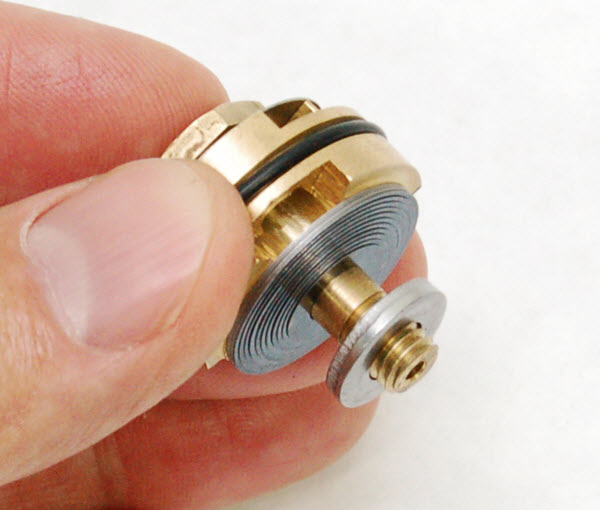
|
VC7- Place the Base Plate (thick washer) on the shaft.
Notice that the Valving Bolt is being held into the Recess. This keeps the Check Plate aligned during assembly.
|
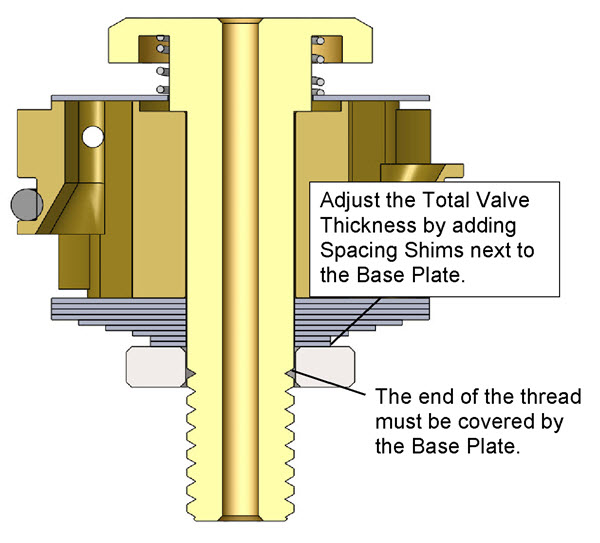
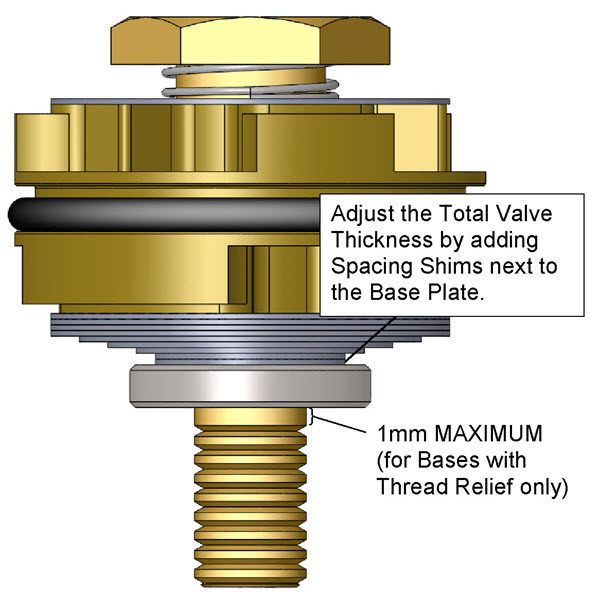
|
VC8- Make sure the Total Valving Stack Height is correct.
This step is here to insure you don't "run out of thread" when tightening the Valving Bolt. This height adjustment is done with Spacing Shims. If needed, they should be added just above the Base Plate. The Spacing Shims must be larger in diameter than the smallest shim in the stack.
The shims should be guided with the straight, non-threaded part of the shaft and should not be on the thread.
This particular Compression Base has a 2mm "non-threaded" pocket in it for bolt thread clearance. (Most Bases do not have this pocket.) Normally when the valve stack is compressed upon install, the thread cannot extend below the Base Plate.
With this pocket the thread can extend slightly (1mm max) beyond the Base Plate.
|
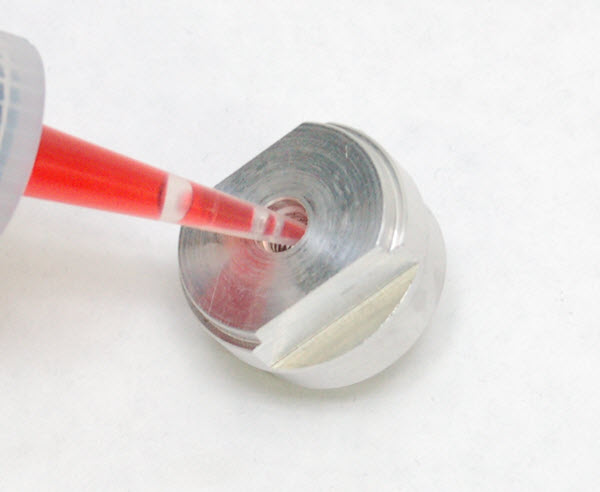
|
VC9- Use Loctite on the Compression Base thread...
|
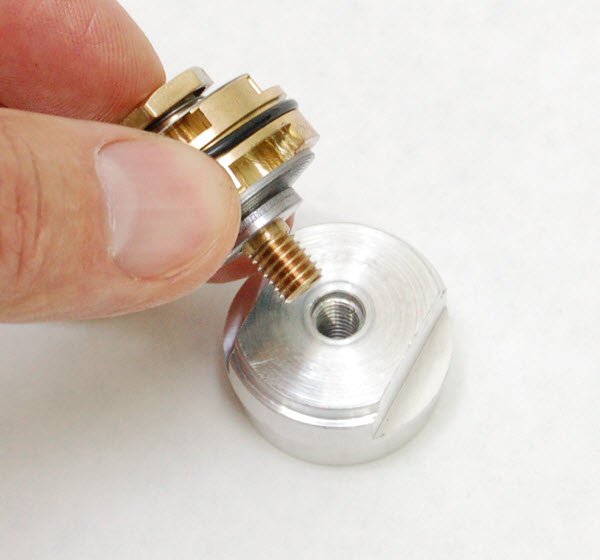
|
VC10- make sure the Base Plate is installed, then install the Valving Bolt and...
|
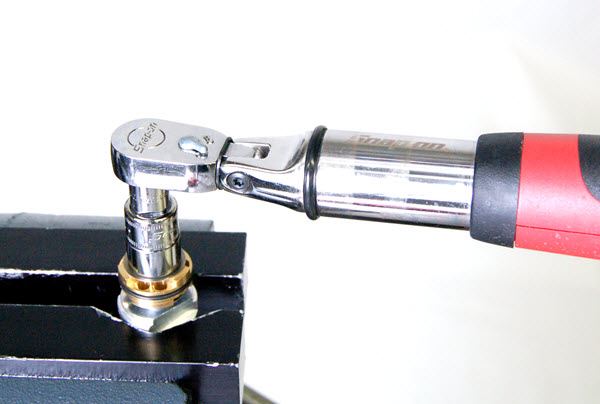
|
VC11- tighten it to spec with a torque wrench.
CAUTION! The threads can be damaged without extreme care. You must use Loctite. The 6mm bolt must be torqued with a torque wrench to 30 in-lbs (2.5 ft-lbs or 0.35 kgf-m), NO MORE! Do not take this step lightly.
|
VC12- Single Stage
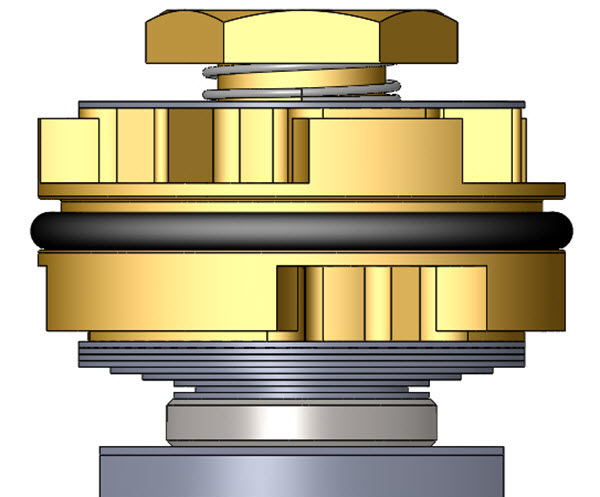
|
VC12- Two Stage
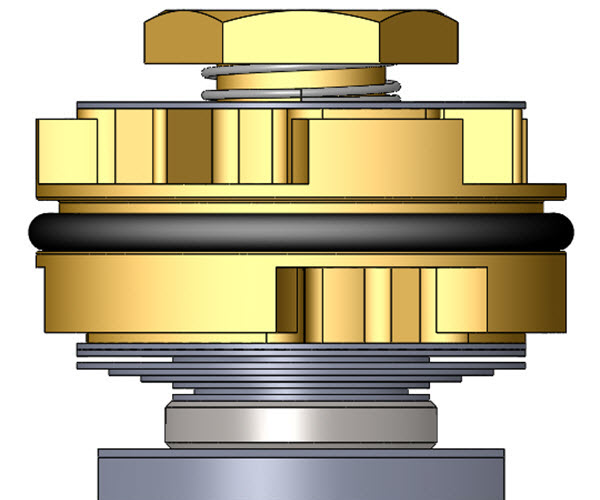
Notice the gap in the valving stack where the Crossover is. The crossover gap should be clearly visible upon inspection.
|
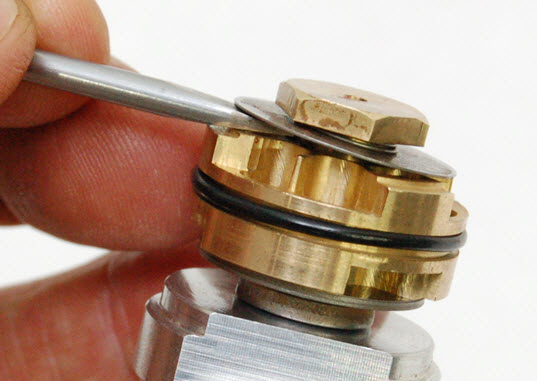
|
VC13- Make sure the Check Plate is free and can move up and down against the Spring.
|
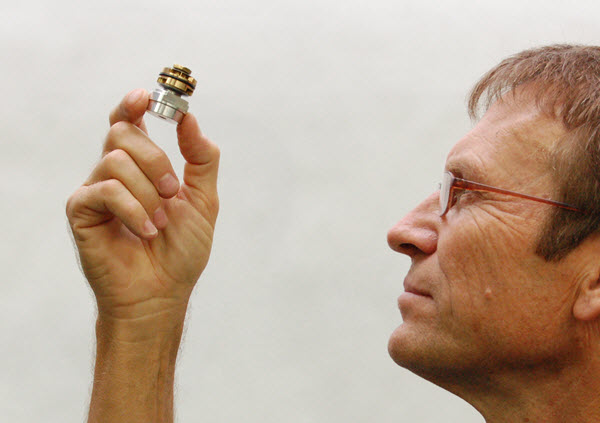
|
VC14- Visually check your work.
Hold the Compression Stack up to the light and look for proper assembly. If there are any problems, disassemble the stack and look for burrs to surface and/or dirt in the valving. Reassemble and check again.
Make sure the o-ring is on the Gold Valve.
|

|
VC15- Make sure the shims that go next to the Gold Valve completely cover the ports on both sides of the piston! If the ports are not covered there will not be enough damping.
This could be caused by a number of reasons. Please call Tech Support if this occurs and you can't figure it out.
|
|
|
VC16- Return to the main instructions and continue with Rebound Valving and Assembly.
|

